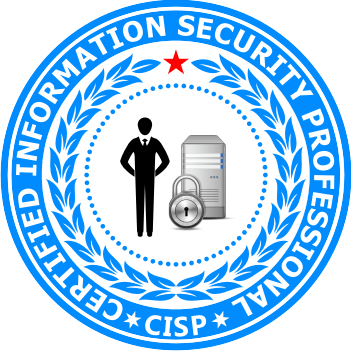Certified Information Security Professional (CISP)
Exam Code: CISP-001

The Certified Information Security Professional (CISP)™ on Information Systems certification program is directed towards senior-level personnel in the information processing industry, If you plan to build a career in information security – one of today’s most visible professions – and if you have at least five full years of experience in information security, then the CISP credential should be your next career goal. It’s the credential for professionals who develop policies and procedures in information security.
Information security, sometimes shortened to InfoSec, is the practice of defending information from unauthorized access, use, disclosure, disruption, modification, perusal, inspection, recording, or destruction. It is a general term that can be used regardless of the form the data may take (electronic, physical, etc…)
The ubiquity of computers and the internet in the life of human beings has enabled chance, motive, and means to do harm. With such endangers in front of us, it becomes necessary security for security professionals, to learn about how to manage computer and information security aspects. Hence this course provides methods to develop a new framework for information security, an overview of security risk assessment and management, and security planning in an organization.
Governments, military, corporations, financial institutions, hospitals, and private businesses amass a great deal of confidential information about their employees, customers, products, research, and financial status. Most of this information is now collected, processed and stored on electronic computers and transmitted across networks to other computer (source wikipedia)
Due to the difficulty of this certification and the knowledge required to pass the exam, the CISP title carries great weight in the job market. For IT professionals looking to move up on the corporate ladder, this certification can give the extra boost that is needed to move from fieldwork into management positions.)
Course Duration: 30 to 35 Hours




